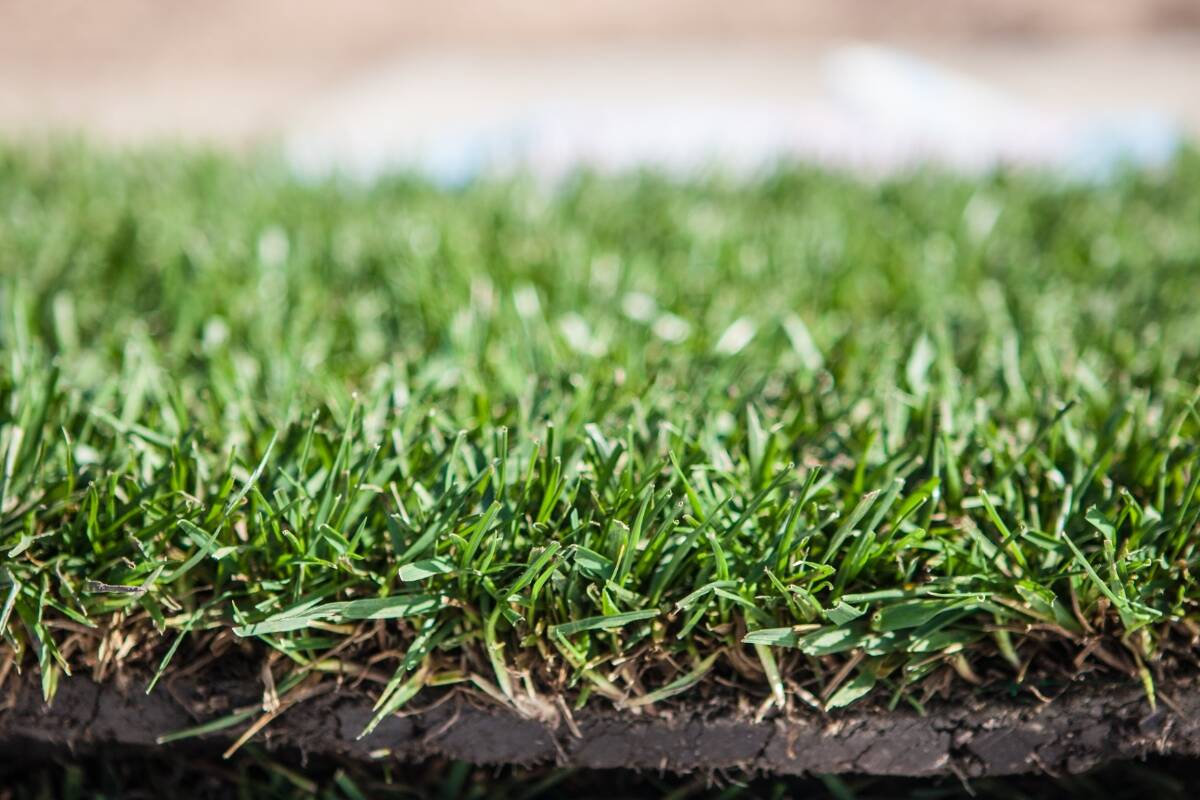
Sod is cultivated grass that’s sold in ready-to-install strips or slabs. It’s a great option for homeowners who need an “instant lawn”, as it’s already fully grown. In this article, we’ll go through the best types of sod for your lawn, depending on what you need, where you live, and how much effort you want to exert on lawn care.
Factors to Consider When Selecting Sod
Before laying down sod, it’s important to figure out what type of sod is the best for your lawn. Turf has different levels of tolerance, maintenance needs, and even aesthetics. Here are some factors to consider when you go sod shopping:
Location
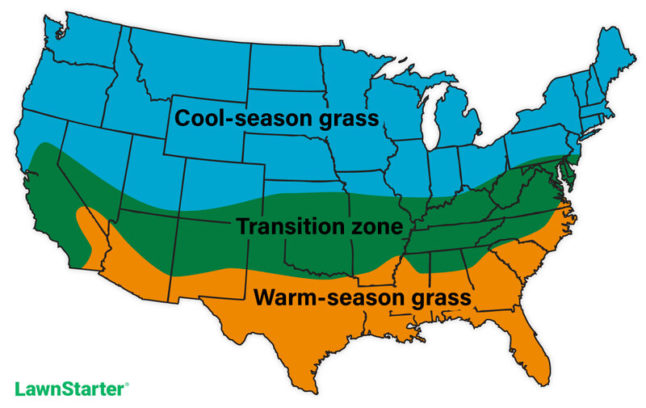
Where do you live? Generally, homeowners living in the North will want cold-hardy cool-season grasses, while those living in the South should opt for heat-loving warm-season grasses. If you live in the transition zone, you’ll need cool-season grasses that can survive during the hotter months or warm-season grasses that can handle cooler temperatures.
You’ll also need to check how shady your lawn is. Some sod will do just fine under partial shade, while others need full sunlight. Here’s a guide to growing grass in the shade, which could be useful to homeowners with lots of shady lawn spots.
Lastly, you’ll need to check your soil type and what nutrients it contains (typically done with a soil test). While some turfgrass species can grow in almost any type of soil, most grasses prefer certain growing conditions. If you’re set on growing a specific type of turfgrass but don’t have the right balance of soil nutrients, then you’ll need to use soil amendments to improve your lawn.
Purpose
What will you be doing with your lawn? If you don’t have any pets and don’t plan to walk on your lawn much, then you don’t have to worry about this section.
But what if you have pets and/or children or use your lawn for events or hanging out? Then, you’ll need a durable turf species that can handle the wear and tear of foot traffic. You might want to look into grass that can handle dog urine, which can kill turf.
Maintenance Needs
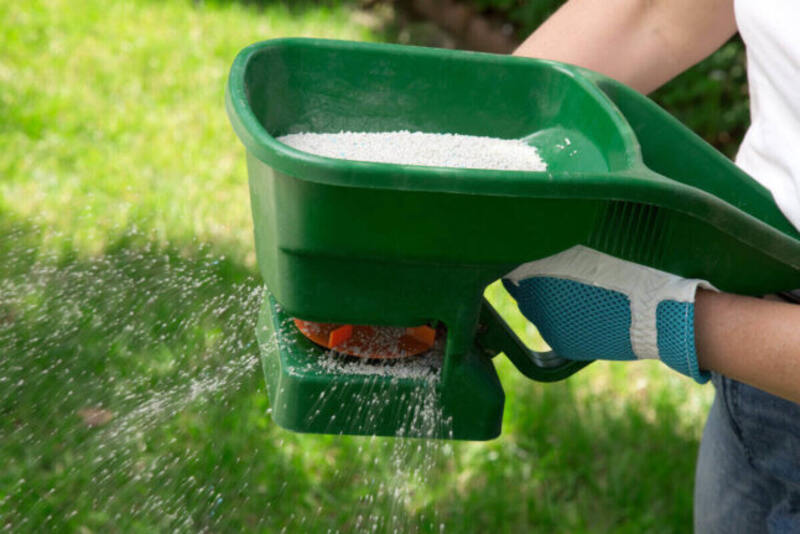
Some types of sod are easier to maintain than others, requiring less fertilizer, irrigation, and mowing. Others require lots of water to survive through the hotter months, need regular dethatching and mowing, or must be fed with fertilizers to grow vigorously.
Some grasses are also more prone to lawn diseases, turf pests, and weeds, so they’ll need more attention.
Aesthetic
Turf comes in different shades of green, ranging from light green to emerald to blue-green. Grass blades also have different shapes and sizes, contributing to their texture; turf can be fine or coarse to the touch.
Price
The cost of sod ranges from $0.20 to $0.85 per square foot, depending on the turfgrass species you choose to get for your lawn. The cheapest warm-season grass is Bahiagrass, while the most affordable cool-season grass is perennial ryegrass.
Cool-Season Sod
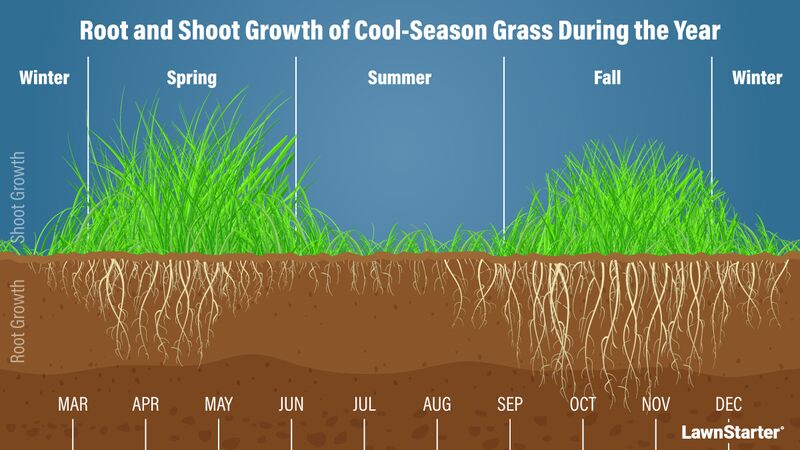
Cool-season turf is best for lawns that experience cold, harsh winters as they’re better suited for such temperatures. Some grasses can stand up to drought conditions and heat, making those species better for lawns in the transition zone. Here are some of the best cool-season sod species:
Fine Fescues (Festuca spp.)
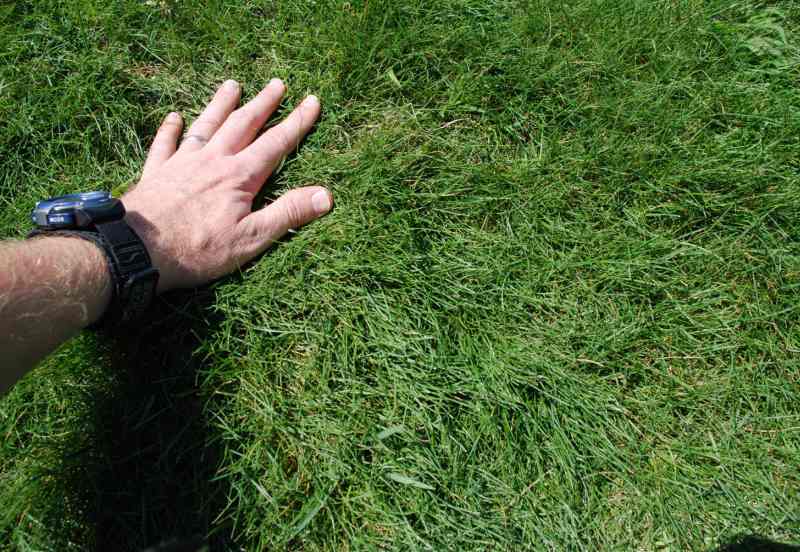
When bought as sod, fine fescue can have a mix of different fescue species, such as creeping red fescue, Chewings fescue, hard fescue, or sheep fescue. This turfgrass is perfect for homeowners who want a low-maintenance lawn, as it doesn’t need much fertilizer or vigorous mowing. It also has moderate to high drought resistance, doesn’t mind a little shade, and holds up against salt.
However, look elsewhere if you’re going to walk on your lawn a lot; generally, fine fescues can’t handle heavy foot traffic. Their tall fescue counterparts tolerate wear and tear much better.
Fine fescue characteristics:
- Spreads by: Mostly a bunch-type grass, so it doesn’t spread; creeping red fescue is the exception as it spreads through rhizomes.
- Appearance: Narrow leaves with a fine texture; color depends on species.
Tolerances:
- Shade: Moderate to high
- Drought: Moderate to high
- Foot traffic: Low to moderate
- Other: Salt (moderate)
Maintenance needs:
- Fertilizer: Low
- Mowing: Low
- Water: Moderate
- Potential for disease: Moderate. Mostly affected by red thread, leaf spot, dollar spot, summer patch, and powdery mildew.
- Sun: Full sun to partial shade
- Soil: Prefers drier, well-draining soils with a pH of 6 to 6.5. Tolerates many types of soil and varying fertility levels.
- Mowing height: 2.5 to 4 inches, depending on species
Kentucky Bluegrass (Poa pratensis)
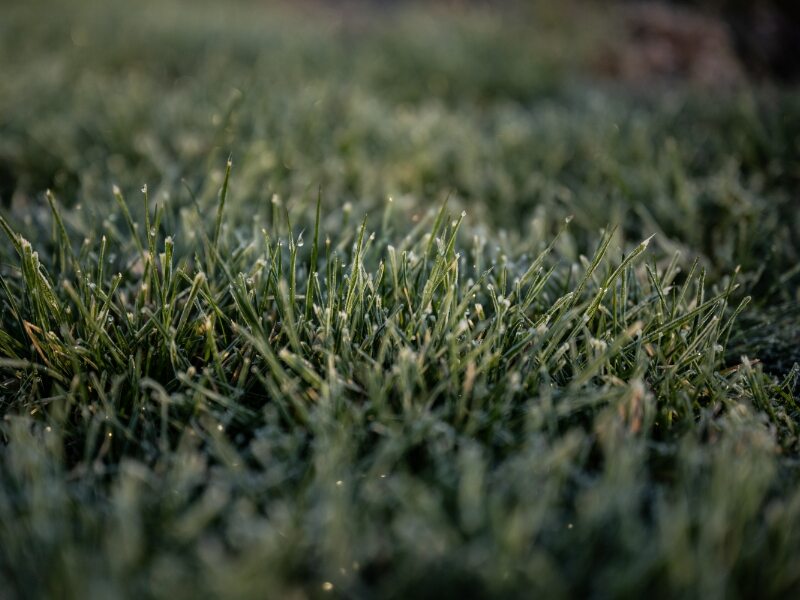
Known for its bluish-green hue, Kentucky bluegrass (KBG) is loved by many homeowners. This cool-season grass is the most cold-resistant common turfgrass species, so it’s a good option if you live somewhere particularly chilly during winter. It’s probably best that KBG stays in the colder parts of the country, too; its shallow roots make it more susceptible to heat and drought.
KBG can’t handle shade and is prone to diseases. But that’s where its poor tolerances end. It is moderately wear-resistant and can recover from dog urine, making it a better choice than fine fescue grasses if you have pets that like to run around your lawn.
Unlike fescue grasses, Kentucky bluegrass sod has less of a tendency to become patchy as it spreads through rhizomes (underground stems). If some areas die off, the remaining grass will spread to the bare patches and fill them in. However, it needs more maintenance than fine fescue.
Kentucky bluegrass characteristics:
- Spreads by: Rhizomes
- Appearance: Blue-green leaves with boat-shaped tips, medium to fine texture
Tolerances:
- Shade: Low
- Drought: Moderate
- Foot traffic: Moderate
- Other: Dog urine (moderate), Cold (best of cool-season grasses)
Maintenance needs:
- Fertilizer: High
- Mowing: Moderate
- Water: Moderate
- Potential for disease: Moderate to high. Prone to leaf spot, dollar spot, summer patch, stripe smut, and necrotic ring spot.
- Sun: Full sun (some variants can handle light shade)
- Soil: Prefers fertile, heavy, and well-draining soils with a pH of 6 to 7.5.
- Mowing height: 2.5 to 3.5 inches
Perennial Ryegrass (Lolium perenne)
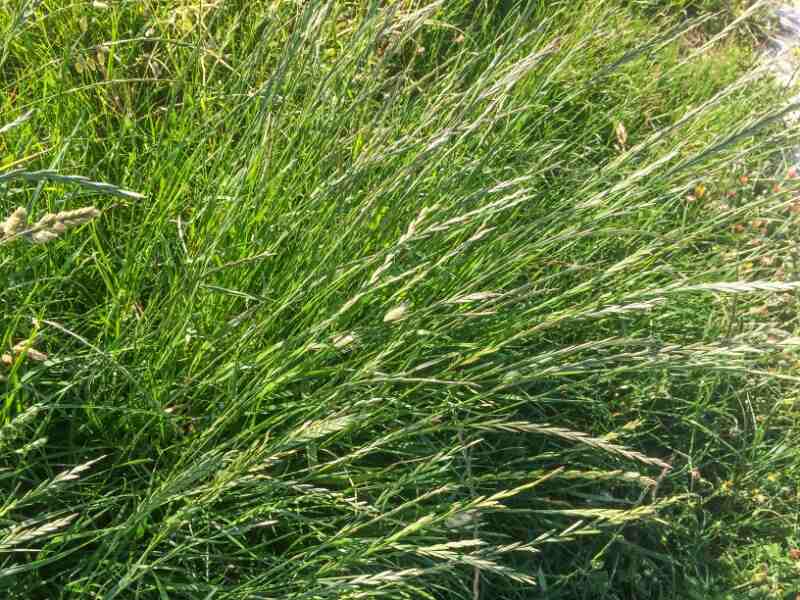
Among the many species of ryegrass, the one often used in sod is perennial ryegrass. While it can be patchy, this clumping, bunch-type grass grows fast and outcompetes weeds. This growth has to be supported, though; it needs more water and fertilizer than other types of grass.
Perennial ryegrass is one of the best grasses for high-traffic lawns because of its great resistance to foot traffic. It’s also pretty tolerant against dog urine. However, it can’t handle heat and drought due to its shallow roots
Perennial ryegrass characteristics:
- Spreads by: Bunch-type growth habit, so it doesn’t spread like creeping grasses.
- Appearance: Pale green
Tolerances:
- Shade: Low
- Drought: Low
- Foot traffic: High (best of all common turfgrasses)
- Other: Dog urine (moderate)
Maintenance needs:
- Fertilizer: Moderate
- Mowing: Moderate
- Water: Moderate
- Potential for disease: High. Susceptible to gray leaf spot, red thread, and leaf spot (also known as melting-out).
- Sun: Full sun
- Soil: Prefers fertile, well-draining soils with a pH level of 6 to 7, but it can tolerate some poor drainage and soils with a pH between 5 and 8.
- Mowing height: 1.5 to 2.5 inches
Tall Fescue (Festuca arundinacea)

Turf-type tall fescue is quite different from its fine fescue cousins. It has wide, shiny, upright, dark green grass blades that give it a coarse texture. This turfgrass holds up well against foot traffic and dog urine and is also more resilient against disease when properly cared for.
Tall fescue does share some similarities to fine fescue, namely its bunch-type growth habit; both fescue types can grow bare patches over time. It can also tolerate partial shade.
Tall fescue characteristics:
- Spreads by: It has a bunch-type growth habit, so it doesn’t spread like creeping grasses. Spreads through seeds.
- Appearance: Wide, dark green leaves with a coarse texture
Tolerances:
- Shade: Moderate
- Drought: Moderate to high
- Foot traffic: Moderate
- Other: Dog urine (moderate)
Maintenance needs:
- Fertilizer: Moderate
- Mowing: High (frequent)
- Water: Moderate
- Potential for disease: Tolerates most diseases with proper maintenance.
- Sun: Full sun to partial shade
- Soil: Prefers fertile, well-draining clay soils with a pH level of 5.5 to 6.5, but it can grow in a wide range of soil conditions.
- Mowing height: 2 inches; only mow when it reaches 3 inches tall.
Warm-Season Sod
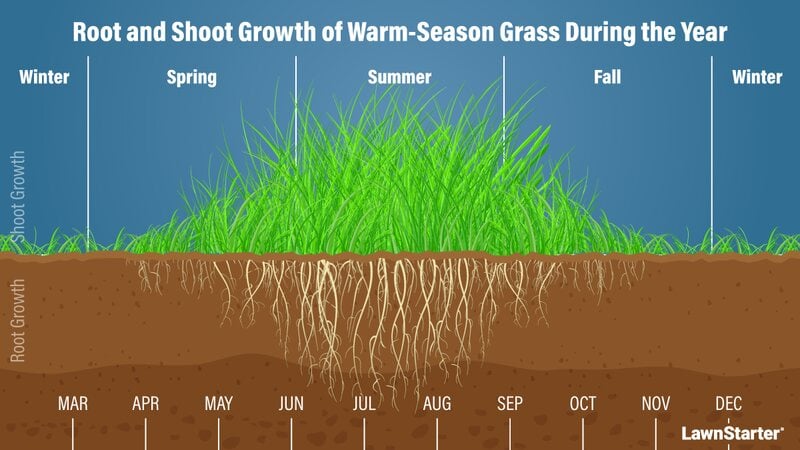
If you live somewhere that experiences hotter temperatures and drought conditions, then warm-season sod will be the best for you. Despite thriving in heat, some warm-season grasses have deceptively good cold tolerance, making them good options for transition zone lawns. Just don’t expect these grasses to stay green all year round; they will turn brown and become dormant during the colder months.
Bahiagrass (Paspalum notatum)
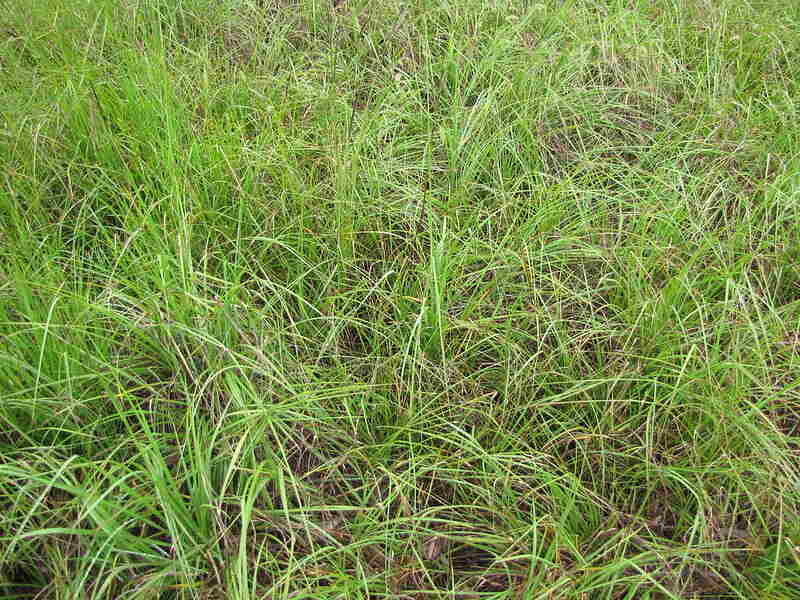
The vibrant green Bahiagrass is a good sod option for homeowners with acidic soils that aren’t very fertile. While it prefers soils with more sand, it can grow in nearly any soil condition. It also doesn’t need a lot of fertilizer.
This grass is stoloniferous, meaning it spreads through above-ground stems called stolons; it can easily patch up bare spots by itself.
Just keep it in the sun; it has one of the worst shade tolerances of warm-season sod. It’s also not an ideal choice for yards that will be walked on often, as it has poor foot traffic resistance.
Bahiagrass characteristics:
- Spreads by: Stolons and seeds
- Appearance: Vibrant green with a coarse texture
Tolerances:
- Shade: Low
- Drought: Moderate
- Foot traffic: Low
- Other: Dog urine (moderate)
Maintenance needs:
- Fertilizer: Low
- Mowing: High, every 1 to 2 weeks to remove seed heads.
- Water: Moderate
- Potential for disease: Low. Good resistance against diseases and insect infestations.
- Sun: Full sun
- Soil: Prefers sandy loam soils with a pH level of 5.5 to 6.5, but it can grow in a wide range of soil conditions, even low fertility.
- Mowing height: 3 to 4 inches.
Bermudagrass (Cynodon dactylon)
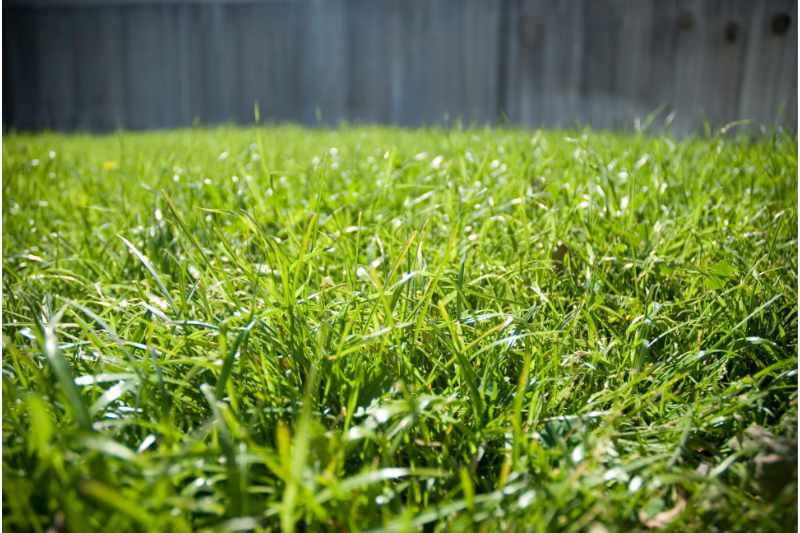
Seen in golf courses and home lawns alike, Bermudagrass loves the sun and doesn’t mind being stepped on. Growing in most soil conditions, this hardy grass also resists dog urine and weeds, and it has excellent drought and salt tolerance. It even has a deceptively good cold resistance.
Bermudagrass sod should only be installed by homeowners who can put in the work towards lawn maintenance or those who can hire a lawn care pro to do it instead. Spreading through stolons and rhizomes, Bermudagrass grows vigorously; you need to mow it very often. It also has a tendency to invade flower beds.
However, this fast growth allows it to recover from damage quickly. Coupled with its innate wear resistance and tolerance for dog urine, it’s no wonder why Bermudagrass is one of the best grass types for dog owners.
Bermudagrass characteristics:
- Spreads by: Aggressively through stolons and rhizomes
- Appearance: Medium green with a medium to fine texture
Tolerances:
- Shade: Low (worst shade resistance of common warm-season grasses)
- Drought: High
- Foot traffic: High
- Other: Dog urine (moderate), Cold (moderate), Weeds (moderate), Salt (high)
Maintenance needs:
- Fertilizer: Moderate
- Mowing: High
- Water: Moderate
- Potential for disease: Moderate. Good resistance against diseases, but diseases are common. Low resistance to insects.
- Other: Develops thatch easily.
- Sun: Full sun
- Soil: Prefers soils with a pH level of 6 to 6.5 but tolerates a wide range of soil conditions.
- Mowing height: 0.5 to 1.5 inches for hybrid Bermudagrass, 1.5 to 2.5 inches for common Bermudagrass.
Buffalograss (Bouteloua dactyloides)
Spreading as far north as Canada, the native buffalograss is great for homeowners living in the transition zone. It’s the most cold-tolerant warm-season turfgrass because of its strong winter dormancy response. However, that means it goes dormant earlier and wakes up from dormancy later, so you won’t be able to enjoy its dark green color as long as some other grasses.
Buffalograss is a great sod option if you want a low-maintenance grass. It doesn’t need a lot of fertilizer nor mowing, and it’s quite resistant to diseases and insects. Sadly, it doesn’t stand up to foot traffic and shade all that well.
Buffalograss characteristics:
- Spreads by: Stolons
- Appearance: Dark green to blue-green blades with a fine texture
Tolerances:
- Shade: Low
- Drought: High
- Foot traffic: Low
- Other: Cold (high)
Maintenance needs:
- Fertilizer: Low
- Mowing: Low
- Water: Moderate
- Potential for disease: Low. Good resistance against diseases and insects. Low resistance to weeds.
- Sun: Full sun
- Soil: Highly prefers clay soils with a pH level of 6.5 to 7.5. It won’t grow well in sandy soils.
- Mowing height: 2 to 3 inches
Centipedegrass (Eremochloa ophiuroides)
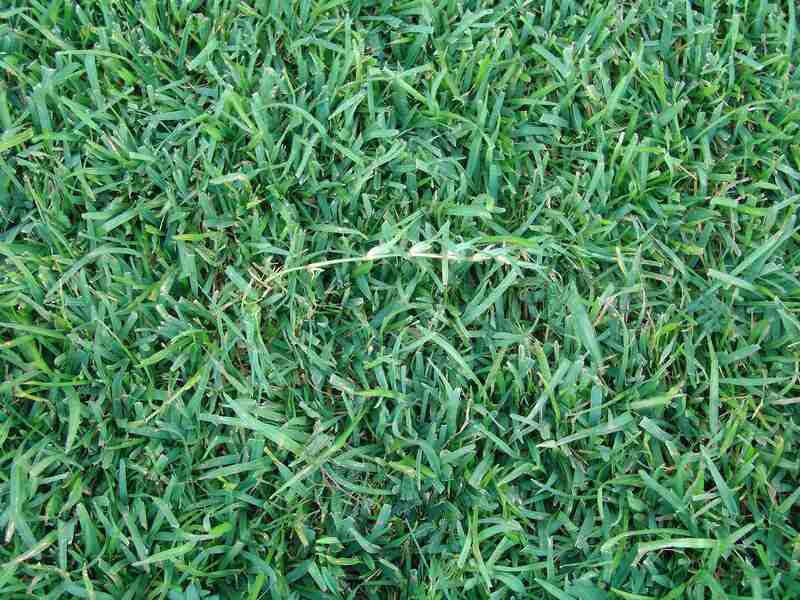
Another low-maintenance sod option for your lawn is centipedegrass. This light green grass grows in acidic soils and doesn’t need a lot of fertilizer, water, or weed control. Just make sure that your soil doesn’t have too much iron in it as it can’t handle it.
Although this grass is also stoloniferous, it recovers slowly when damaged. As such, it can’t tolerate extreme cold or foot traffic. Despite that, it’s not a bad choice if you have dogs because of its soft texture and resistance to dog urine.
Centipedegrass characteristics:
- Spreads by: Stolons
- Appearance: Light green with a soft texture
Tolerances:
- Shade: Moderate
- Drought: Moderate
- Foot traffic: Low
Maintenance needs:
- Fertilizer: Low
- Mowing: Low
- Water: Low
- Potential for disease: Low. Good resistance against diseases and insects.
- Sun: Full sun to partial shade
- Soil: Highly prefers acidic, well-draining, and infertile soils with a pH level of 5 to 6. It won’t grow well in dense clay soils and those with high iron levels.
- Mowing height: 1 to 2 inches
St. Augustinegrass (Stenotaphrum secundatum)
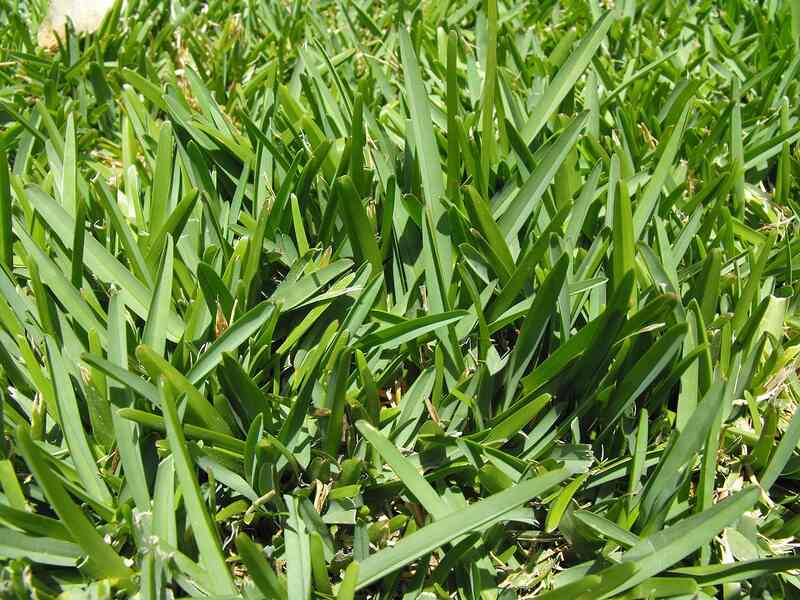
The stoloniferous St. Augustinegrass is popular among homeowners in coastal areas because of its good salt tolerance. It tolerates many soil types and can grow in sandy soils. It’s also a great option if you have lots of shady areas in your lawn, as it’s the most shade-tolerant warm-season grass.
However, St. Augustinegrass can’t really handle foot traffic, and it’s very susceptible to pests and lawn diseases. It’s also a more maintenance-heavy grass type, needing frequent mowing and regular fertilization. Keep that in mind before buying St. Augustine sod.
St. Augustinegrass characteristics:
- Spreads by: Stolons
- Appearance: Light green with a soft texture
Tolerances:
- Shade: Moderate, most shade-tolerant warm-season grass
- Drought: Moderate to high
- Foot traffic: Low
Maintenance needs:
- Fertilizer: Moderate
- Mowing: High, needs frequent mowing because it grows fast
- Water: Moderate
- Potential for disease: Moderate to high
- Other: Develops thatch easily
Sun: Full sun to partial shade
Soil: Prefers moist, fertile soils with a pH level of 6 to 7.5, but it tolerates many soil types, including sandy soils. However, it won’t tolerate soil compaction.
Mowing height: 3.5 to 4 inches
Zoysiagrass (Zoysia japonica)
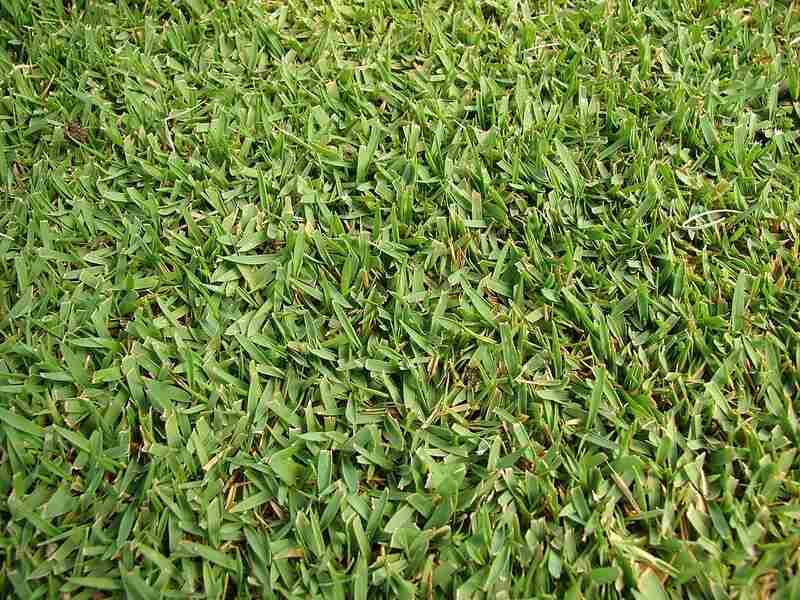
Depending on the cultivar, Zoysiagrass can be either fine or coarse-textured; however, they are all typically established in a lush lawn. It’s a resilient sod type, tolerating foot traffic, dog urine, shade, pests, and cold, depending on the grass variety.
Like Bermudagrass, Zoysia sod spreads through stolons and rhizomes. It tends to spread, even invading landscape beds. This contributes to its heavy thatch production, so it will need regular dethatching. Despite its creeping nature, it’s slow to recover when damaged because it grows slowly.
Zoysiagrass characteristics:
- Spreads by: Stolons and rhizomes
- Appearance: Depends on the cultivar
Tolerances:
- Shade: Moderate
- Drought: Moderate to high
- Foot traffic: High, but recovers slowly from damage
- Other: Cold (moderate), Dog urine (moderate)
Maintenance needs:
- Fertilizer: Low, doesn’t need much nitrogen fertilizer
- Mowing: Moderate
- Water: Moderate
- Potential for disease: Low. It has good disease tolerance, but it can attract pests.
- Other: Prone to heavy thatch build-up
- Sun: Full sun to partial shade
- Soil: Prefers well-draining soils with a pH level of 6 to 6.5, but its different cultures tolerate many soil conditions, including clay soils.
- Mowing height: 1 to 2 inches
Pros and Cons of Sod
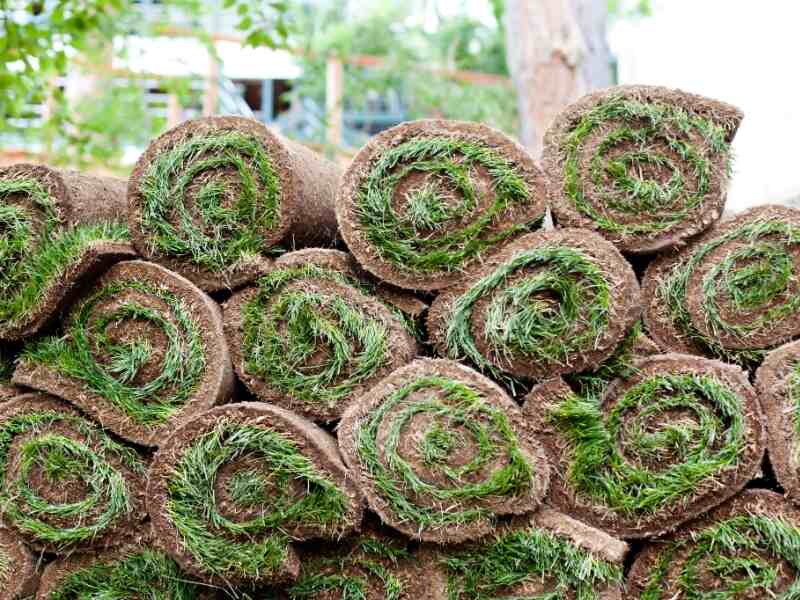
So, why should you choose sod, and are there any downsides to installing sod? Here’s a table that discusses the pros and cons of sod:
| Pros | Cons |
| ✓ Fully grown from the beginning, giving you an instant lawn. ✓ Can be walked on after a shorter period. ✓ Establishes quickly (about 14 days to develop a stronger root system). ✓ Can be laid down almost any time of the year. | ✗ Lawn can be less hardy because the turf was grown in different conditions than the ones on your lawn. ✗ Improper installation can make your lawn look artificial because of the seams. ✗ It is more expensive than the alternatives, except for artificial grass. |
The biggest incentive for homeowners to install sod is its quick results. It gives you an instant lawn, which is great if you need a beautiful yard as soon as possible. One scenario where sod is especially useful is if you’re trying to boost your property value and curb appeal more prior to selling your house.
Sod is also more convenient because you can lay it down almost all year round, save for winter.
However, the price you’ll pay for the convenience of sod is both literal and figurative. Sod is more expensive than its alternatives — except for artificial grass. It can also be less hardy than a seeded lawn as it was grown and established elsewhere.
Sod vs. Alternatives
Your other lawn growth options include hydroseeding, using grass plugs, and growing grass from seed. Here’s how they stack up against laying down sod.
| Hydroseeding | Traditional Seeding | Grass Plugs |
| ● More customizable than sod ● Cheaper and more cost-effective than sod ● Hardier than sod ● Needs a lot of water ● Can only be planted during the growing season ● Takes more time and effort to establish | ● More customizable than sod ● Grass seed is the cheapest way to grow a lawn ● Hardier than sod ● More time-consuming ● Takes more time and effort to establish ● Can only be planted during the growing season ● Can grow patchy | ● Cheaper than sod ● Doesn’t take as long as seeding a lawn ● Better for small lawns or for recovering damage ● Can’t be used in large areas |
How to Install Sod
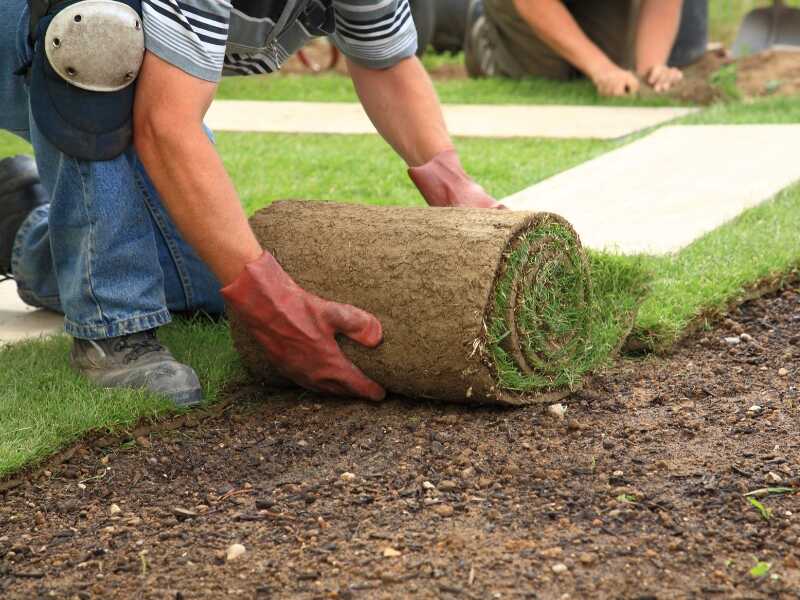
Installing sod is relatively easy, but it’s quite labor-intensive and time-consuming. Here are some simplified instructions on how to lay down sod:
- Remove obstacles in your lawn.
- Evaluate the area.
- Till the soil.
- Lay down the sod.
- Water the sod.
- Fertilize your lawn after two weeks.
- Mow your lawn once it’s about 3 to 4 inches tall.
For more detailed instructions, check out our step-by-step how-to guide on laying sod DIY.
FAQ About the Best Types of Sod
What is the most durable sod?
It depends on what you mean by durable. If you’re looking for a lawn that can withstand a lot of foot traffic, then you can’t go wrong with perennial ryegrass sod or tall fescue sod. For warm-season lawns, consider Bermudagrass or Zoysiagrass sod.
If you’re looking for sod that stands up to pests and disease, then tall fescue, Bahia, and centipedegrass are all good picks.
What is the best sod for erosion control?
The best sod for erosion control is a deep-rooted species like tall fescue or Bermudagrass. Avoid turf with shallow roots, such as Kentucky bluegrass.
How is sod made?
Sod is produced in dedicated sod farms, where grass is planted and allowed to mature. It can take anywhere from 10 months to 2 years before they’re ready to be harvested and sold.
When ready, the grass, its root system, and the soil it’s planted in are cut using blades attached to tractors. These strips of grass, roots, and soil — collectively “sod” — are then rolled up or stacked, ready to be sold.
The farms typically sell their sod to local suppliers as sod needs to be used quickly once harvested, up to a few days at most.
Is Your Lawn Ready for New Sod?
Picking the right type of sod for your lawn is only one step toward a beautiful green lawn. The sod needs to be installed properly and taken care of for it to have the best chance of establishing. Why not let lawn care pros do it?
Hiring LawnStarter’s lawn care pros means you’ll get a new lawn without dealing with the hassle of sourcing high-quality sod, prepping your existing lawn, and laying down the sod itself. Talk about easy!
Main Photo Credit: P_Wei / Canva Pro / License